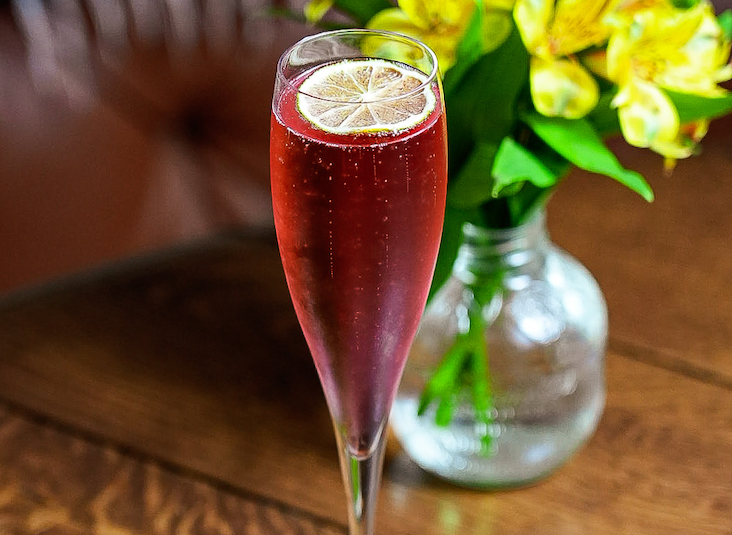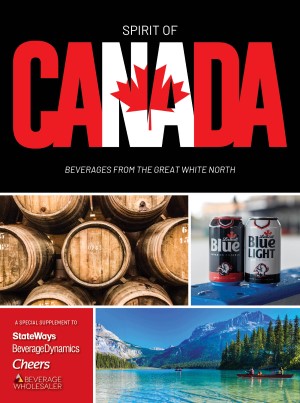Coffee is a staple, and despite being a hot beverage, it has year-round appeal. Many bartenders and baristas are recognizing the drink’s pull and are coming up with a variety of innovative coffee drinks to please guest taste buds as a result.
These drinks can be a point of differentiation, says Suzanne Brown, an international tea and coffee marketing consultant with Brown Marketing Communications in Atlanta, Ga. It’s particularly effective, she points out, if a restaurant or bar has a signature drink, especially since diners are becoming more open-minded and adventuresome.
It’s also a good idea to offer seasonal beverages, she says, since it makes a drink more special and gives customers something to look forward to in specific months. “It keeps the menu fun,” she points out.
An additional sales benefit of coffee-based drinks is how much they can be tailored to suit the season. “The beauty of coffee drinks is that they are popular throughout the winter and well into the spring in New Jersey,” points out bar manager Mark Shopene. “The weather can still be chilly [in the spring], and our guests continue to enjoy the drinks, especially at the fireplace.”
Japonais, a restaurant where Japan meets Europe, which has locations in New York, Chicago and Las Vegas, serves two coffee cocktails year round, says Sandy Park, executive director of operations. Its coffee offerings include the Chocolate Hazelnut, $13, which contains Frangelico, Godiva Chocolate Liqueur, whipped cream and coffee. The coffee can be hot or iced, “but most people like it hot,” says Park. The other drink is the Vanilla Cream, also $13, made with Navan Natural Vanilla Cognac, Kahlúa, whipped cream and coffee, served in a tall slender glass with a handle.
The New Dessert
Patrons typically are opting for these drinks after dinner, more frequently to complement dessert than to replace it, which makes for a nice additional sale, Park points out.
To justify the high price point, the restaurants use high-end coffees such as Illy, as well as high-end liqueurs. While the drinks are popular with almost every demographic, she says they particularly are well liked by women over 40.
The drinks are promoted both on the dessert menu and reinforced by the servers when they ask customers about desserts. “We can get people who weren’t thinking of another drink,” says Park. “Having a unique combination [in a drink] certainly encourages people to order one.”
Salt Creek Grill serves six coffee cocktails from its Rumsford, N.J. location. The Navesink contains Grand Marnier, brandy, fresh-brewed coffee and whipped cream; the Chip Shot consists of Tuaca, Bailey’s, coffee and cream; and Salt Creek Coffee’s ingredients are Butterscotch Schnapps, Bailey’s, coffee and whipped cream. All cost $9 and are marked up by 30 percent. They contain Douwe Egberts coffee, which, says Shoepene, is not bold enough to turn off general consumers but also is not too weak for coffee lovers.
The cocktails at Salt Creek all are served in glass coffee mugs except the Chip Shot, which comes in a large snifter. “We want guests to look at them and want to try them as they see them being carried to other tables,” Shopene says. “The drinks are all garnished with our fresh whipped cream, which means other tables see them.”
Popular Year Round
Bond restaurant and lounge in The Langham Hotel in Boston, Mass. sees strong sales all year round of its signature Espresso Martini, $14. The location also has a Super Automatic coffee machine so each cup of coffee is prepared fresh. A double espresso shot is mixed with Godiva Chocolate Liqueur and Van Gogh vodka, and it is made in a lighter version for the spring months.
“These drinks contain lots of caffeine, but we do give people the option of how strong they have them,” says Gaylord Lamy, assistant food and beverage director at the 318-room Langham. “If people want them softer than we typically serve them, we can use Stoli Vanilla vodka instead of the Van Gogh, but people don’t usually ask for that.” And decaff versions can be easily made but are rarely requested, he adds.
The drink is served in a Martini glass with three coffee beans floating on top; the beans are added to provide a nice aroma while a guest is drinking the cocktail. It’s typically an after-dinner drink, and it is made with Jameson’s Irish Whiskey and served in a coffee mug on a silver tray with simple syrup and whipped cream floating on top. Top-of-the-line liqueurs are used to justify the $10 price tag that comes with the Irish Coffee and $14 Espresso Martini price points, but also to make a better drink, says Lamy.
Customers either love or hate coffee drinks, according to Ian Keene, bar manager at Pearl Bar & Dining in Bellevue, Wash., but often what leads to them disliking the beverages, he adds, is that they are made with low-quality coffee or the beverage’s ingredient ratios are not good. “It’s all in the art of the mixing,” he explains.
Pearl Bellevue’s coffee drinks are hot and are mostly served as after-dinner drinks all year long, either with dessert or instead of it. Four typically are served, the most popular of which are the Pearl Banana Nut Coffee, made with Frangelico, Tuaca, banana liquor, Illy coffee, Amarula and whipped cream, and the Spiced Hazelnut, made with Kahlúa Hazelnut, Tuaca, Illy coffee, Amarula and whipped cream. Both are priced at $8—a 60 percent markup.
The drinks are all served in tall Irish coffee glasses. “It’s got to look good—down to the little peak that comes off the whipped cream,” says Keene. In warmer weather they are more typically consumed with dessert, he says, making the end of dinner very indulgent.




